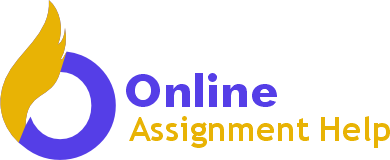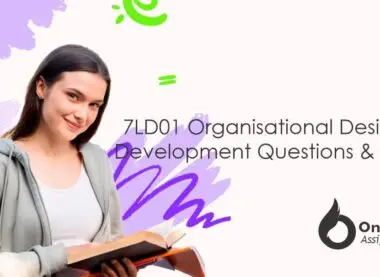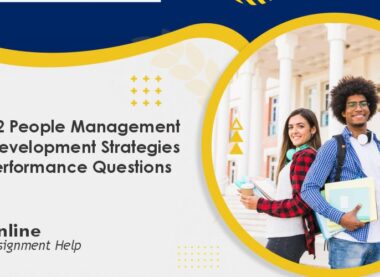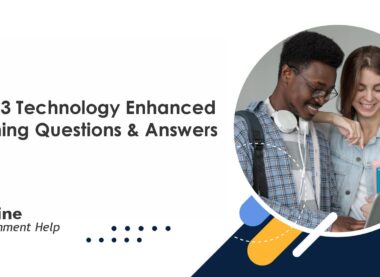Table of Contents
7CO01 Work and working lives in a Changing Business Environment Questions
Question 1 (AC1.1)
To what extent do you agree with the view that the trend towards greater globalisation has peaked and that its extent will decline in the next few years? Assess in what major ways a retreat from globalisation would affect employment markets in your country?
Question 2 (AC1.2)
It is commonly argued that developments in the field of information technology will soon create machines with ‘general artificial intelligence’ that are able to do anything the human brain can do, including generating new scientific knowledge. Critically evaluate the ways in which this development will affect employment in your industry or sector? Justify your answer with at least ONE example.
Question 3 (AC1.3)
Explain why the population in most countries is ageing rapidly. Illustrating your answer with examples, evaluate how this trend is creating challenges for people professionals in organisations.
Question 4 (AC1.4)
Over time, across the world, societies are becoming more affluent, but also more unequal. To what extent do you agree with the view that employment practices are the cause of these trends? Justify your answer.
Question 5 (AC2.1)
In what ways are developments in technology currently affecting the management of people within your organisation, or one that is familiar to you, and your own work as a people professional? Illustrating your answer with TWO distinct examples, evaluate the major
advantages and disadvantages of these developments.
Question 6 (AC2.2)
In recent years governments have raised the ‘education leaving age’ and have brought in incentives to encourage employers to invest more money in training and development. Assess the purpose of these strategies and evaluate how successful they have been. Justify your answer.
Question 7 (AC 2.3)
What are the main principles that underpin health and safety law in your country? Illustrating your answer with examples, analyse why it is in the interests of employers to comply with these requirements?
Question 8 (AC 2.4)
In most countries recent years have been ones in which unemployment levels have been low by historic standards. Critically discuss why this situation has evolved. How is it affecting the management of people in your organisation?
Question 9 (AC 3.1)
Analyse the effective management and leadership of change in organisations with reference to TWO change management models. Illustrate your answer with examples of how and when the models might help contemporary organisations to manage and lead change effectively and when the models are less relevant.
Question 10 (AC 3.2)
Examine the main causes of resistance to change amongst employees and the ways in which people professionals can address this resistance. Illustrate your answer with examples.
Question 11 (AC 3.3)
Evaluate the case for and against the introduction of a four day working week. Illustrate you answer with examples and reference to published research.
Question 12 (AC 3.4)
Assess how people management practices within your organisation, or one that is familiar to you, can promote creativity and innovation. Illustrate your answer with TWO examples of people management practices which promote creativity and innovation.
Question 13 (AC4.1)
Critically evaluate the business case for promoting ethical people practices in your own organisation, or one that is familiar to you. Illustrate your business case with examples.
Question 14 (AC 4.2)
What TWO distinct recommendations to enhance wellbeing would you make to the Senior Leadership Team in your organisation, or one that is familiar to you? Justify your recommendations with reference to research evidence and explain how you can evaluate
the impact of your recommendations.
Question 15 (AC 4.3)
Critically evaluate the options for your organisation, or one that is familiar to you, to improve its record in the area of sustainability. Identify TWO distinct interventions that will not be too expensive to implement. What would you recommend and why?
Question 16 (AC 4.4)
Critically discuss how Equality, Diversity and Inclusion (EDI) efforts could be more impactful in your own organisation, or one that is familiar to you.
7LD03 Assignment Answers
Question 3 (AC1.3)
Introduction
One of the main reasons that the population in many countries is ageing rapidly is the rapidly declining mortality rates where individuals are now living for much longer due to an improved life expectancy which is usually contributed by improved healthcare services, technological advancements in the field of medical technology and better overall living conditions which translates into the population living for much longer. (Salomão Filho et al., 2023). Another significant factor that has contributed to the population ageing rapidly is the decline in fertility rates among the population which implies that the younger population is currently shrinking where there are more adults than younger individuals. Fertility rates have been on the decline, especially in the urbanised and industrialised populations which has further contributed to the increase in the number of older adults compared to the young population (Salomão Filho et al., 2023).
Workforce Demographics
The rapidly ageing population presents a significant challenge in maintaining workforce demographics where people professionals have to deal with the issue of their organisations having an imbalance between the number of employees approaching retirement age who are usually more than the young members entering the workforce (Farr-Wharton et al., 2023). This presents the people professionals in the organisation with the challenge of recruiting and retaining younger talents to resolve this imbalance and thus ensure continuity in its operations. Another issue that is presented to people professionals by the challenge of workforce demographics is the increased age-related health issues and disabilities which often affect the overall performance of the organisation (Farr-Wharton et al., 2023). As the workforce grows older, they often get age-related illnesses and this contributes to increased healthcare costs, increased absenteeism and reduced overall productivity from the workforce thus affecting the organisation’s overall performance. Additionally, the shift in workforce demographics contributes to more difficulties in succession planning for people professionals (Farr-Wharton et al., 2023). This gives the organisation’s people professionals the difficulties of designing a proper and efficient succession plan implying that there may be a breakdown in operations when the older members of the workforce leave the organisation. Another issue presented by the challenge of workforce demographics is the ageing workforce having different preferences for rewards compared to the younger population where they may prefer rewards such as retirement benefits, healthcare options and work-life balance while the younger population may focus on rewards such as career progression and skill development (Boehm et al., 2021). This presents a challenge to people professionals during the design and implementation of rewards packages. For example, SATORP is also facing the challenge of workforce demographics due to its rapidly ageing population and it should overcome this challenge by attracting younger talent, accommodating older workers’ needs, developing future leaders to enhance continuity and offering tailored rewards packages which are specific to the different age groups of employees.
Recruitment and Selection
People professionals are also experiencing difficulties in employee recruitment and retention where they are unable to access and attract younger talent while the experienced members of the workforce are approaching their retirement age thus making it difficult to retain them within the organisation (CIPD, 2024). People professionals are currently facing a shrinking talent pool of young individuals seeking to join the organisation, especially in organisations that are facing labour shortages. This affects the organisation with reduced productivity and a potential breakdown of operations since it cannot access the desired talents to meet the organisation’s labour needs. Additionally, people professionals are also facing the challenge of retaining their workforce who are leaving due to their age. Organisations with a large portion of their workforce being older and nearing the retirement age present people professionals with the risk of losing valuable knowledge and expertise and thus their efforts to retain these employees become more difficult because of retirement and other reasons for exit from the organisation by the older employees (Tonelli et al., 2019). This implies that the employee retention rates continue to diminish thus exposing the employers to the possibility of having a less talented workforce which may affect the organisation’s overall performance. Additionally, inter-generational dynamics in the workplace further escalate the organisation’s retention efforts where the older population may have different expectations and preferences which may contribute to potential difficulties, conflicts and misunderstandings thus affecting the overall collaboration between the two groups of employees thus affecting the organisation’s performance (Tonelli et al., 2019). My organisation, SATORP currently experiences difficulties in the recruitment and retention of employees due to the ageing population which potentially threatens its overall performance in the future. SATORP can overcome this challenge of retention and recruitment by leveraging technology to attract younger employees in the organisation, offer work-life balance opportunities and phased retirement options for the older employees and foster diversity and inclusion in the workplace to enhance collaboration between the two age groups in the organisation thus enhancing organisational performance.
Conclusion
Globally, the ageing population is currently increasing because of reasons such as the decline in mortality and fertility rates which implies that organisations are more likely to have older employees in the workforce compared to the younger employee population (Salomão Filho et al., 2023). This contributes to more organisational issues such as succession planning and the loss of institutional knowledge and culture thus affecting the organisation’s performance. Additionally, an ageing population presents employees with the problem of recruitment and retention where there are few young talents to recruit while the majority of the workforce is leaving the organisation due to retirement thus affecting the overall retention rates thus affecting the overall organisational performance (Tonelli et al., 2019). My organisation, SATORP is also facing these challenges and it can resolve the issue of an imbalance in the population characteristics due to age by seeking strategies to attract the younger talent pool such as leveraging technology and offering attractive salaries while also seeking strategies to retain older employees such as offering work-life balance and tailored rewards such as retirement benefits and rewards insurance to ensure they can remain longer in the organisation (Salomão Filho et al., 2023).
Question 5 (AC 2.1)
Introduction
The Saudi Aramco Total Refining and Petrochemical Company (SATORP) has consistently held the profile of one of the most advanced institutions in the refinery sector. This reputation, birthed through advances in health, safety, and environmental approaches, requires to be sustained with people management as a measure of crafting a grounded organisation or a solid facility. The huge size of the company suggests absorption of technology around the areas of online recruitment and people analytics. In online recruiting, the company gets to take advantage of present technologies to manage attraction, recruitment, selection, and on-boarding (CIPD, 2023). Advanced technology in this area will raise efficiency at the company saving it time necessary in serving the oil industry. People analytics form part of big data analytics and should serve SATORP in collecting required data to access valuable insights on people management.
Way 1: Online Recruiting
Online recruiting directly speaks to the ever-growing element of technology greatly assisting organisations in recruiting suitable talent. SATORP, as one of the biggest oil companies, may often require to make recruitment in filling its human resource (HR) requirements. Technology can assist in attracting the candidates, recruiting them, and selecting them. In attraction, the company’s online brand visibility can help in illustrating its employment profile and internal cultures. Recruitment gets directly to absorbing interested candidates who posted their details via online systems (Arman, 2023). Selection will have technologies assisting in the sifting of the applications and identifying suitable candidates. It is against this background that SATORP cannot afford to ignore the merits of online recruitment systems. It should be noted that SATORP can take enjoy the benefit of accessing a wide pool of talent especially at a time when technology is enabling remote working opportunities.
One of the advantages brought by online recruitments is that potential candidates can always leave their testimonials on a verified institutional website for perusal as needed by an employer. Equally, SATORP only needs to indicate available vacancies in their website and, consequently, attract attention from potential talent (Marable, 2023). Critically, another major advantage associated with online recruiting is the massive time savings. The organisation does not need to draft advert copies, circulate them to mainstream media houses, and wait for feedback. Another merit is cost savings. For a large facility such as SATORP, non-technology options may involve huge media budgets and excessive consultation fees paid to HR recruiting agencies. The disadvantages of online recruiting, however, do exist. One, it creates an impersonal nature of recruitment. The people managers at SATORP may never get to internalise the actual personality of new hires. Two, information overloads on online platforms can create operational glitches.
Way 2: People Analytics (Big Data Analytics)
It is already accepted that people management inarguably rises as the most important function in all organisational activities. For SATORP, turning to technology will elevate its people management tactics and exponentially amplify efficiency. People analytics are part of the big data analytics, an operational advantage advanced to employers for the purposes of effectively addressing people management issues. The technology allows the gathering of data along the lines of employee behaviour, their performance, and levels of engagement (DiClaudio, 2019). The wider technology can have different systems each collecting the data and transmitting to the organise-wide technology. The data collected at SATORP using this technology will strongly influence decision-making especially through the analysis of patterns, the trends, and latest insights. People analytics also come in to assist in predictive thinking through evaluation of trends such as turnover, retention, and employee exits (Peeters et al., 2020).
The value of people management data cannot be underestimated in the 21st century. By using people analytics as a technology, SATORP directly enjoys the use of big data in executive and HR decision making (CIPD, 2023). One, it can allow employees a change of managing themselves up to an extent. The employees will feed in information on issues such as work leaves, and update of personal details. For a large organisation such as SATORP, this merit creates high-level efficiency. The presence of well-developed system dashboards can also allow people management officers or the HR department to easily dissect complex people data to the organisation’s management. Contrarily, a downside of people analytics in big data is the expenses involved (Larsson and Edwards, 2021). Installation and management require massive resources. Also, using external contractors to manage the data can expose SATORP to risks of infiltration and data manipulation. For a company operating in such a sensitive sector and based on its huge size, any exposure to data breaches creates a huge operational risk.
Conclusion
Technology has made its way into the human resource environment and consistent technology developments require consistent responses from people managers or HR departments. At SATORP, online recruitment comes up to assist the company in accessing a vast talent in a way that can create a huge competitive edge. Using the technology will immensely save the company resources especially time and monetary expenses. Even though online recruitment can have negative results such as lack of personalised recruitments, the merits greatly surpass the demerits. As a large facility, SATORP will make use of people analytics to analyse employee behaviours, patterns and current trends (Peeters et al., 2020). As a consequence, it is possible that the organisation is likely to realise better HR and executive decision-making actions. It is true to observe that a people analytics system remains expensive and can get exposed to costly data breaches. The company should, however, maximise the merits of accurate and improved HR decisions.
Question 9 (AC 3.1)
Introduction
Organisations often go through different types of changes as they try to maintain and adapt to the constantly changing economic environment and thus maintain their operations. As a result, these organisations are expected to follow the gradual change process to ensure they can shift from normal operations and gradually change to adopting the desired changes (Phillips and Klein, 2022). Organisations may change such as structural changes where it is required to change its reporting strategies management structures, department reorganisations and mergers and takeovers which require the organisation to undergo the gradual process of changing until the change is fully implemented. Another way that organisations change is through process changes where organisations improve their operations to achieve efficiency and effectiveness through processes such as reengineering and adopting new technologies thus achieving efficiency in operations (Errida and Lotfi, 2021).
Lewin’s Change Management Model
Lewin’s change management model is one way that organisations can effectively manage and lead change in an organisation. The model is characterised by three stages, unfreezing, change, and refreezing (Burnes, 2019). During the unfreezing stage, the organisation is usually in its preparation stages to effecting the desired change through creating awareness of the necessity for this change and thus reducing any instances of resistance from the employees it often involves communicating, educating and involving key stakeholders to ensure that the desired changes are achieved. This implies that this stage involves the removal of any potential barriers against change thus guaranteeing that the desired changes in the organisation can be effectively achieved. The next stage in this model involves the desired changes being implemented in the organisation which may include changes such as new processes, structures, technologies and behaviours which are aligned with the objectives of the desired change (Burnes, 2019). This stage requires the organisation’s management to actively support and enforce the desired change within the set timeframes thus ensuring the change is achieved. The next stage is the refreezing stage which involves the stabilisation of the new changes made through reinforcing them with the use of policies, systems and cultural norms to ensure that these changes are permanent. This stage seeks to ensure that the changes made are transformed into organisational cultures to ensure they help them achieve the desired strategic goals and objectives in the organisation (Burnes, 2019). For example, the Saudi Aramco Total Refining Petrochemical Company (SATORP) may effectively manage changes such as digital transformation using Lewin’s model of change to ensure that the existing technologies are unfrozen, the desired changes implemented and then the achieved change refrozen to form part of the organisation’s culture. However, Kurt Lewin’s model of change may be less relevant to organisations in different situations. Rapidly changing environments, resistance to change, and complexity of the changes may hinder the application of Kurt Lewin’s model of change management thus leading to the desired changes not being implemented as required.
The Kubler-Ross Model
Commonly referred to as the “5 Stages of Grief,” the Kubler-Ross model of change can be used to effectively lead and manage change by understanding the emotional stages that individuals go through when they are experiencing significant changes or loss (Simpson, 2022). The first stage in this model of change is the denial stage where individuals attempt to deny and resist any changes while refusing to understand its inevitability. In this case, employees in an organisation may attempt to downplay the positive impacts of the desired changes as they attempt to remain in the status quo. The second stage is anger where individuals experiencing changes become angry and frustrated due to the changes being implemented. The bargaining stage comes in third where individuals seek to negotiate with the organisation to avoid these changes (Simpson, 2022). Depression then becomes the next stage where individuals experiencing changes have feelings of sadness, hopelessness and helplessness as they understand the inevitability of change and feel anxious due to uncertainties in the future. Acceptance is the final stage where the individuals realise that the changes are here to stay and can only accept and live with them forcing them to adapt to the new reality. During this phase, employees may seek ways to cope and embrace these changes enabling them to move on with resilience and determination (Zhang et al., 2023). For example, SATORP may experience organisational change such as diversification of its products and the employees will undergo the five stages of Kubler-Ross’s model of change by developing feelings of denial, anger against the desired change, bargaining to avoid the desired change, falling into depression due to the implementation of the changes and finally accept and embrace the changes in the organisation. However, this model of change may be less relevant when complex changes are being made due to its simplistic nature, may be affected by cultural differences and may be inappropriate for positive changes because it was mainly designed for reactions to loss (Simpson, 2022).
Conclusion
In summary, organisational change is a common occurrence in organisations as organisations seek to adapt to the changing business environment and ensure that the organisations can remain operational and productive. Kurt Lewin’s model of change can be used to effectively lead and manage change by ensuring that the desired changes undergo the three stages of unfreezing, change and refreezing to ensure that the desired changes are effectively implemented (Burnes, 2019). Additionally, Kubler-Ross’s five stages of grief is another change management model that can be used to effectively manage and lead changes in the organisation through the five stages of denial, anger, bargaining, depression and acceptance thus ensuring that the desired changes are achieved. As a result, these models of change can be used by SATORP to effect significant changes in organisations such as digital transformation and diversification to ensure they are effectively achieved (Simpson, 2022). Additionally, SATORP’s management needs to understand the limitations of each change management model to ensure they can seek measures to ensure their efficacy or seek other alternative models to enhance the achievement of change.
Question 16 (AC 4.4)
Introduction
Equality refers to the fair treatment of employees regardless of their protected characteristics such as age, gender, sexual orientation, religion and disability among other protected characteristics (Ciuk et al., 2022). Diversity refers to the presence of differences within a specific setting and in the workplace, it refers to the recognition, valuing and embracing of these differences among an organisation’s employees (Gagnon et al., 2021). Inclusion is the process of creating environments where all individuals feel valued, respected and supported regardless of their diverse characteristics leading to a sense of belonging in the workplace (CIPD, 2023). Equality, diversity and inclusion often benefit an organisation’s people practice through the enhancement of employer brand such that more employees want to work for the organisation, acquisition of top talent from the talent pool and increased employee retention rates. My organisation, SARTOP is committed to promoting equality, diversity and inclusion to effectively support its people practices and thus enhance its overall performance.
Promotion of Equality in Recruitment and Promotion Targets
The promotion of greater equality supports the people practice of recruitment and promotion targets through ensuring that all individuals seeking to join the organisation as employees are given fair opportunities (Kornau et al., 2022). SATORP recognises that it is important to ensure that equality in the recruitment and promotion targets is enhanced to ensure that the individuals recruited and also the general public recognise that the people practice was fair for all individuals. One way that equality supports recruitment and promotion processes is by establishing fairness and meritocracy in the recruitment process where the employees recruited into the organisation are given opportunities due to their merit and fair chances which fosters a culture where employees feel that they are equally capable of being considered for opportunities based on their capabilities and contributions towards achieving desired organisational goals and objectives (Mullin et al., 2021). As a result, SATORP is required to promote equality in its recruitment and promotion targets to ensure that it can benefit through enhancing the trust and morale among its workforce which further contributes to enhanced employee engagement and productivity. Additionally, the promotion of equality in the recruitment and promotion targets further contributes towards enhanced employee retention because they are highly likely to feel more valued, motivated and committed to the organisational goals and objectives. This translates to a reduction in employee turnover and enhances a sense of loyalty among employees thus leading to overall performance and competitiveness in the industry. SATORP needs to therefore promote equality in recruitment and promotion targets to ensure that it retains more employees in its workforce which reduces the costs of recruiting new employees while also contributing to employees’ skills development which is beneficial to the organisation (Mullin et al., 2021). However, SATORP may face several challenges and barriers as it seeks to promote equality in recruitment and promotion targets where unconscious biases may affect equality in the various stages of recruitment such as screening of CV’s and interview evaluation.
Promotion of Diversity in Unconscious Bias Training
The promotion of greater diversity supports the people practice of unconscious bias training which mitigates the negative impacts of unconscious biases in decision-making processes within an organisation. As a result, the promotion of diversity ensures that organisations can embrace diverse perspectives, experiences and backgrounds which contributes towards innovation and creativity and enhanced decision-making (Kornau et al., 2022). As a result, SATORP needs to consider promoting greater diversity in its operations to support the people practice of unconscious bias training to ensure that it can reap the associated benefits such as creativity and innovation thus contributing to enhanced organisational performance. The promotion of diversity in unconscious bias training results in increased awareness among the organisation’s leadership and employees and they recognise the existence of unconscious bias in the organisation and the potential adverse effects that may affect the organisation. This contributes to the people professionals reacting through unconscious bias training to ensure that all employees are recognised regardless of their diverse perspectives, experiences, and backgrounds thus ensuring that creativity and innovation are achieved in the organisation (Mullin et al., 2021). This is a clear indication for SATORP to focus on the need to further promote diversity to support unconscious bias training to raise awareness among the employees and the management on how to enhance diversity considering the numerous benefits associated. Furthermore, the promotion of diversity in the people practice of unconscious bias training encourages the formation of diverse teams and collaborative problem-solving procedures which usually translates to enhanced organisational performance, adaptability to changes and enhanced competitiveness in the current diverse business landscape (Kornau et al., 2022). SATORP should therefore take this under consideration and ensure that it encourages diversity through unconscious bias training thus ensuring that it enhances its decision-making strategies while encouraging employee retention. However, SATORP’s management needs to be aware of some potential challenges and barriers to promoting diversity through unconscious bias training such as resistance to change by some employees and leaders, limited employee segment when unconscious bias training is encouraged and cultural and linguistic barriers which contribute to a breakdown in the unconscious bias training process (Gagnon et al., 2021).
Conclusion
In summary, the promotion of equality and diversity to support people practices is necessary to ensure that organisations can enhance their strategies towards achieving their strategic goals and objectives (Ciuk et al., 2022). SATORP should consider promoting equality in recruitment and promotion processes to enhance trust and engagement among employees thus increasing its productivity. SATORP will also face challenges such as resistance to change and unconscious bias which may threaten its achievement of the desired goals and objectives. Additionally, SATORP should consider promoting diversity in unconscious bias training to ensure that awareness can be created and enhancing employee morale and engagement can be achieved (Gagnon et al., 2021). This will ensure that the organisation can achieve its desired strategic goals and objectives thus enhancing overall performance. Also, SATORP will have to overcome the challenges of resistance to change and potential linguistic barriers that may affect the overall efforts to enhance diversity through people practices.
References
Arman, M. (2023) ‘The advantages of online recruitment and selection: A systematic review of cost and time efficiency’, Business Management and Strategy, 14(2), p. 220. Available at: https://doi.org/10.5296/bms.v14i2.21479
Boehm, S.A., Schröder, H. and Bal, M. (2021) ‘Age-related human resource management policies and practices: Antecedents, outcomes, and conceptualisations’, Work, Aging and Retirement, 7(4), pp. 257–272. Available at: https://doi.org/10.1093/workar/waab024
Burnes, B. (2019) ‘The origins of lewin’s three-step model of change’, The Journal of Applied Behavioral Science, 56(1), pp. 32–59. Available at: https://doi.org/10.1177/0021886319892685
CIPD (2023) Building inclusive workplaces: Assessing the evidence. Available at: https://www.cipd.org/globalassets/media/knowledge/knowledge-hub/reports/building-inclusive-workplaces-report-sept-2019_tcm18-64154.pdf (Accessed: 06 May 2024).
CIPD (2023) Technology and data use in HR functions, CIPD. Available at: https://www.cipd.org/en/views-and-insights/thought-leadership/insight/technology-data-hr-functions/ (Accessed: 07 May 2024).
CIPD (2024) The impact of an ageing workforce, CIPD. Available at: https://www.cipd.org/uk/views-and-insights/thought-leadership/cipd-voice/impact-ageing-workforce/ (Accessed: 07 May 2024).
Ciuk, S., Śliwa, M. and Harzing, A. (2022) ‘Implementing the equality, diversity, and inclusion agenda in multinational companies: A framework for the management of (linguistic) diversity’, Human Resource Management Journal, 33(4), pp. 868–888. Available at: https://doi.org/10.1111/1748-8583.12487
DiClaudio, M. (2019) ‘People analytics and the rise of HR: How data, analytics and emerging technology can transform human resources (HR) into a profit center’, Strategic HR Review, 18(2), pp. 42–46. Available at: https://doi.org/10.1108/shr-11-2018-0096
Errida, A. and Lotfi, B. (2021) ‘The determinants of Organisational Change Management Success: Literature Review and Case Study’, International Journal of Engineering Business Management, 13, p. 184797902110162. Available at: https://doi.org/10.1177/18479790211016273
Farr-Wharton, B. et al. (2023) ‘Older worker-orientated human resource practices, wellbeing and leave intentions: A conservation of resources approach for ageing workforces’, International Journal of Environmental Research and Public Health, 20(3), p. 2725. Available at: https://doi.org/10.3390/ijerph20032725
Gagnon, S., Augustin, T. and Cukier, W. (2021) ‘Interplay for change in equality, diversity and inclusion studies’, Human Relations, 75(7), pp. 1327–1353. Available at: https://doi.org/10.1177/00187267211002239
Kornau, A. et al. (2022) ‘Contested fields of equality, diversity and inclusion at work: An institutional work lens on power relations and actors’ strategies in Germany and Turkey’, The International Journal of Human Resource Management, 34(12), pp. 2481–2515. Available at: https://doi.org/10.1080/09585192.2022.2086014
Larsson, A.-S. and Edwards, M.R. (2021) ‘Insider econometrics meets people analytics and Strategic Human Resource Management’, The International Journal of Human Resource Management, 33(12), pp. 2373–2419. Available at: https://doi.org/10.1080/09585192.2020.1847166
Marable, B. (2023) How HR technology is transforming people analytics, Employee Cycle. Available at: https://www.employeecycle.com/how-hr-technology-is-transforming-people-analytics/#:~:text=Let’s%20look%20at%20some%20of,HR%20and%20executive%20decision%2Dmaking (Accessed: 07 May 2024).
Mullin, A.E. et al. (2021) ‘Inclusion, diversity, equity, and accessibility: From organisational responsibility to leadership competency’, Healthcare Management Forum, 34(6), pp. 311–315. Available at: https://doi.org/10.1177/08404704211038232
Peeters, T., Paauwe, J. and Van De Voorde, K. (2020) ‘People Analytics Effectiveness: Developing a framework’, Journal of Organisational Effectiveness: People and Performance, 7(2), pp. 203–219. Available at: https://doi.org/10.1108/joepp-04-2020-0071
Phillips, J. and Klein, J.D. (2022) ‘Change management: From theory to practice’, TechTrends, 67(1), pp. 189–197. Available at: https://doi.org/10.1007/s11528-022-00775-0
Salomão Filho, A., Tillmanns, T. and Corrigan, T. (2023) ‘Ageing organisations: Reviewing the literature and making a few recommendations for Human Resource Management’, Merits, 3(4), pp. 640–653. Available at: https://doi.org/10.3390/merits3040038
Simpson, J.M. (2022) ‘Understanding change in the university workplace: Are metaphors of bereavement helpful?’, Perspectives: Policy and Practice in Higher Education, 26(3), pp. 96–101. Available at: https://doi.org/10.1080/13603108.2022.2056253
Tonelli, M.J. et al. (2019) ‘Ageing in organisations’, RAUSP Management Journal, 55(2), pp. 127–142. Available at: https://doi.org/10.1108/rausp-08-2018-0062
Zhang, W., Bowers, A.J. and Pang, S. (2023) ‘Promoting teacher knowledge sharing in China: The fostering roles of authentic leadership, reciprocity norms, and Organisational Trust’, Educational Management Administration & Leadership [Preprint]. Available at: https://doi.org/10.1177/17411432231199573







